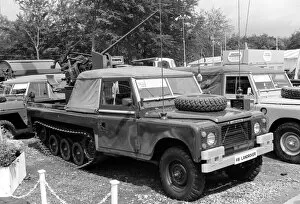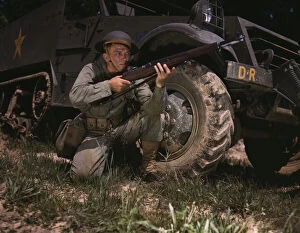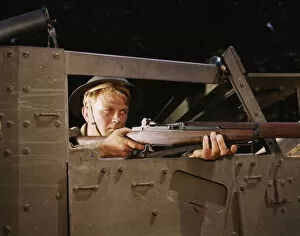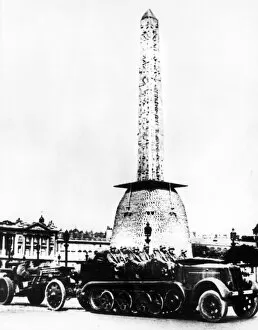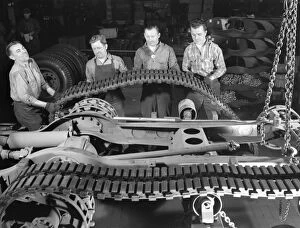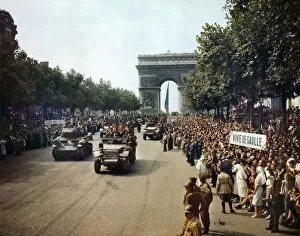Half Track Collection
"Half Tracks: The Versatile Workhorses of World War II" During the tumultuous years of World War II
All Professionally Made to Order for Quick Shipping
"Half Tracks: The Versatile Workhorses of World War II" During the tumultuous years of World War II, half tracks emerged as a crucial component in the Allied forces' arsenal. These hybrid vehicles, combining the mobility of tanks with the versatility of trucks, played a pivotal role on various battlefields and captured the imagination of both soldiers and civilians alike. In 1942, amidst training exercises at Fort Knox, Kentucky, an infantryman proudly held his Garand rifle atop a half track. This young soldier embodied the spirit and determination that defined those who fought for their nations during this global conflict. Alongside him stood fellow infantrymen armed with Garand rifles, ready to face any challenge that lay ahead. Across the Atlantic Ocean in North Africa circa 1943, a black-and-white photograph showcased a captured German Marder III self-propelled gun mounted on a half track. This image serves as a reminder of how these versatile machines were not only used by Allied forces but also repurposed from enemy equipment to aid in their own victories. The significance of half tracks extended beyond military operations alone. In Paris during 1940, German artillery drove through the iconic Place de la Concorde - an indelible image capturing both occupation and resistance. Similarly, crowds gathered along Champs Elysees in 1944 to witness Allied tanks and half tracks pass by; French patriots found solace in these symbols of liberation. Back home in America's heartland at White Motor Company's factory in Cleveland Ohio during December 1941 - just days after Pearl Harbor - dedicated workers meticulously mounted tractor belts onto military half-track vehicles destined for service overseas. Their tireless efforts exemplified American industrial might supporting war efforts on multiple fronts. Meanwhile, another assembly line hummed with activity inside an Ohio truck plant converted into manufacturing U. S Army scout cars. Men worked diligently to produce these vital machines that would aid soldiers in reconnaissance and transportation, ensuring the success of Allied operations.

